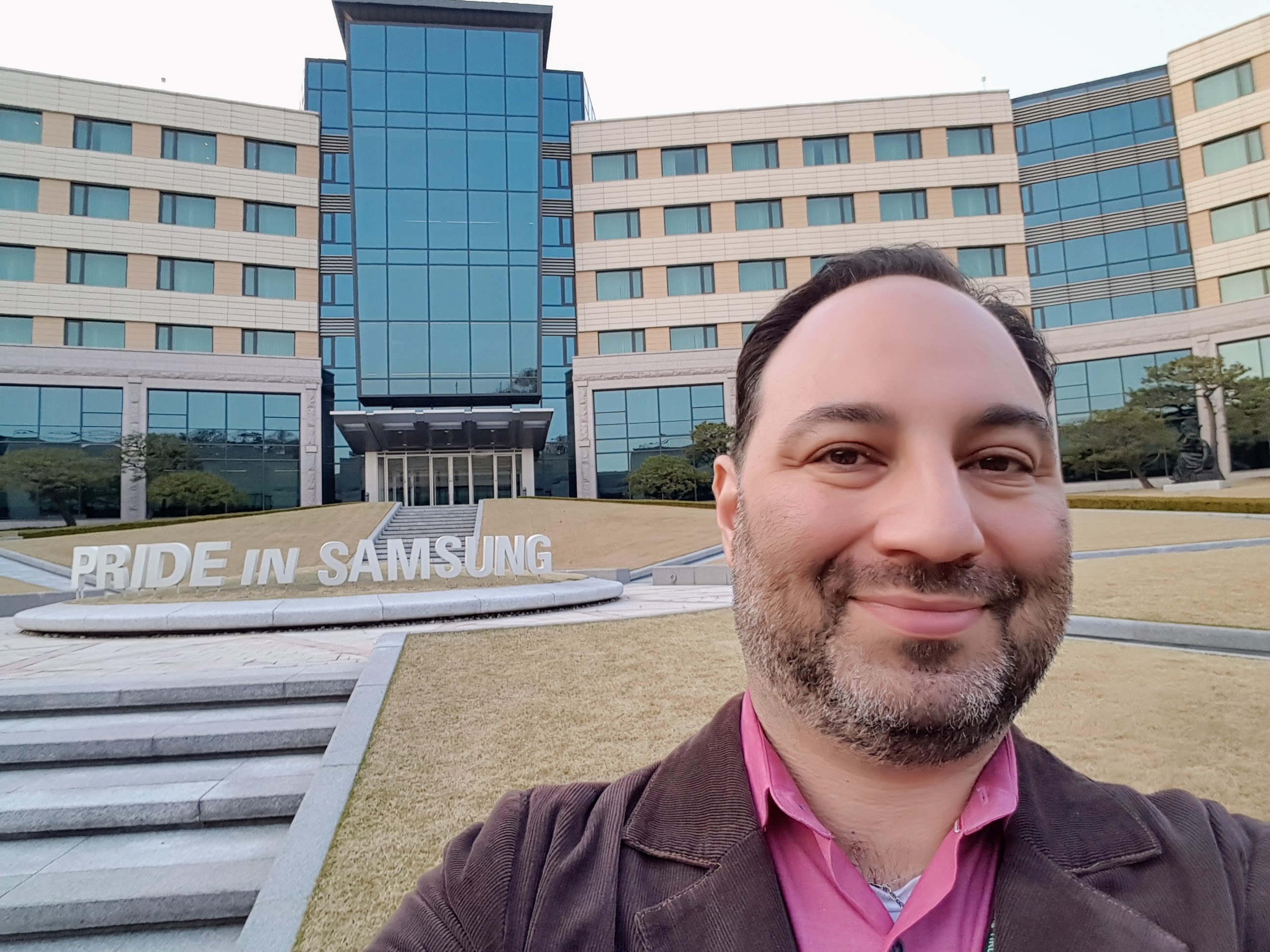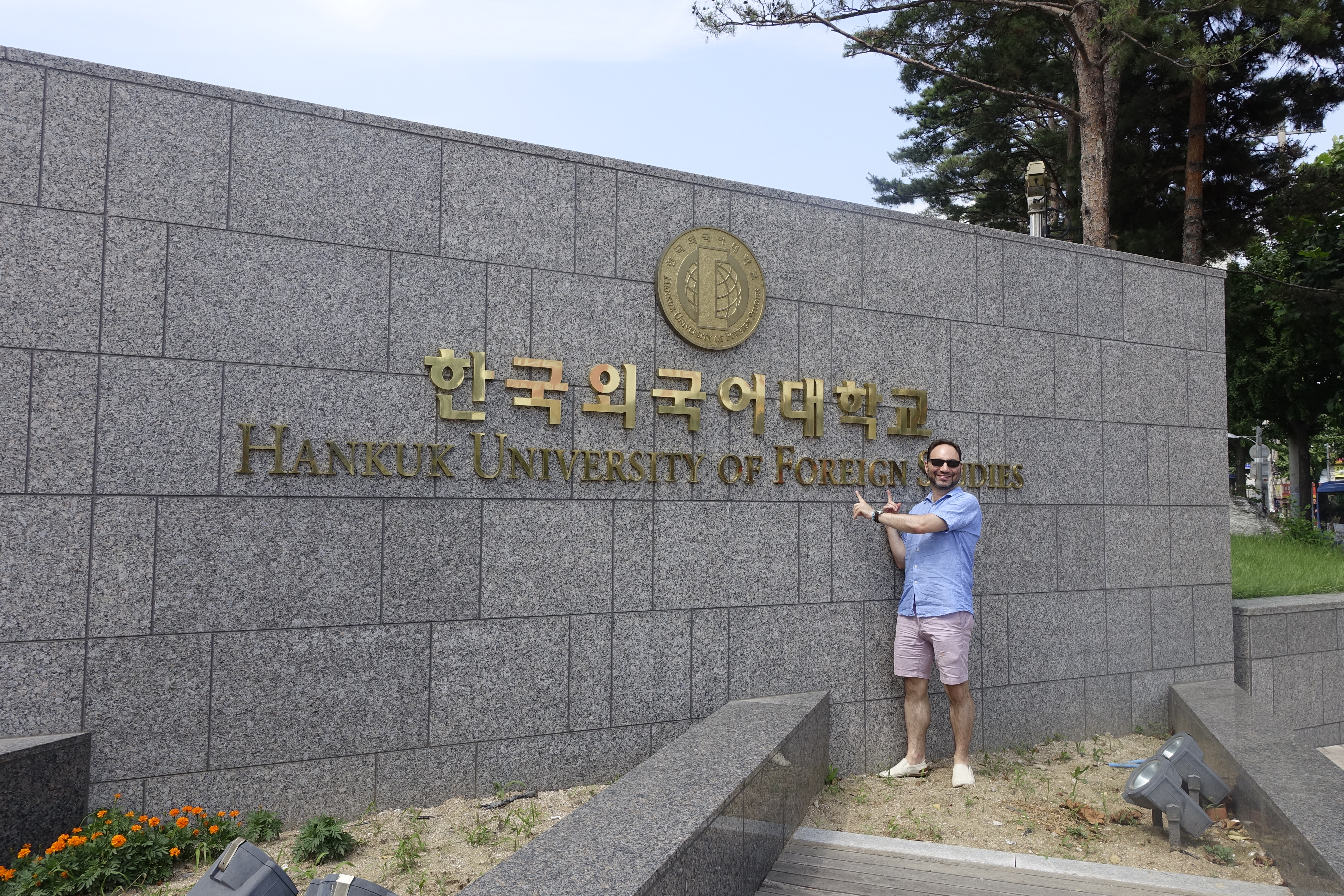As I sit on the couch, listening to music and my dishwasher as I write, it’s hard to believe that it’s been less than two weeks since I started my new job and moved into my apartment.
The apartment
When I was still living in New York, on the ground floor of my prewar Brooklyn building where the pipes hissed and rattled like Das Boot all winter and the window air conditioners buzzed all summer, I had this fantasy of living in a sleek, elegant apartment high in the sky, looking through floor-to-ceiling windows at the lights of some hypermodern Asian city.
Well, I live there now.
My apartment is on the top floor of a 27-story building a few minutes’ walk from Gangnam Station. It’s in one of those beige Asian apartment complexes that look from the outside like a Jane Jacobs nightmare but are actually amazing places to live: clean, modern, spacious. I have three bedrooms and two bathrooms, with a jacuzzi tub in one of them. There are enclosed balconies on either side of the floor-through apartment — with, yes, floor-to-ceiling windows. I can see mostly other apartment towers, but also some mountains and a fair bit of sky, and Namsan Tower in the distance. The whole place is nearly a thousand square feet.
There’s a dishwasher, an oven, a washer-dryer, two stoves. There are four fridges: out on the balcony is the full-sized fridge and the built-in kimchi fridge, while in the kitchen is the smaller built-in fridge plus an odd horizontal fridge above the sink that’s specifically for Korean side dishes. The heating is under the hardwood floors. There’s a leather sofa and a big new TV. Samsung provided me with most of the furniture, and I supplemented it with a trip to Ikea. I’ve managed to set up internet service, and it’s as fast as you’ve heard Korean internet service is. I can stream music and sit on the balcony and sip tea and watch the sun set and the moon rise.
Getting settled in has had its challenges. I still haven’t managed to get my paintings on the walls, which are mostly concrete and will require a serious drill and someone who knows how to use it. I have accidentally set off alarms while trying to answer the doorbell and let people in downstairs, leading to intercom exchanges not unlike Han Solo declaring “Situation normal” on the Death Star, only in Korean. I had to get the maintenance guy in just to show me how to turn on the shower, and then I felt like an idiot when he showed me. Things around the apartment have an unsettling tendency to start beeping: the refrigerator when the door was left open a crack, my bedroom light switch when its built-in alarm decided it was time to go off. I can operate my Samsung Digital Bidets relatively well now, thanks to some time spent with an online dictionary. I downloaded an English version of the manual on my washer-dryer and discovered I’d been putting detergent in the wrong place.
On the other hand, I’ve managed in just two weeks to get my boxes from America, my Alien Registration Card, a bank account. I’ve gotten restaurant food and groceries and Ikea furniture delivered and arranged dry cleaning pick-up service, Internet and phone service. A coworker found me a cleaning lady. I now know how to answer the door and how to throw out my garbage — there is a key card for the compost machine, which weighs my food waste and bills me monthly — and I know that Thursday is recycling day. These small victories are satisfying, especially when they involve using my Korean language skills.
As for the neighborhood, it’s great. I’m in the heart of Gangnam (yes, yes, I am aware that there was a song), with a ton of restaurants and bars and clubs and noise just a few minutes’ walk from my door, yet my apartment is remarkably quiet and sedate. And for all of Gangnam’s craziness — imagine if Fifth Avenue in Midtown had St. Mark’s Place immediately adjacent and you’ll begin to get the idea — I have discovered little corners of the neighborhood that feel, well, neighborhoody, more like where ordinary Koreans hang out than like the blinky, flashy club life a block or two away.
But sometimes it’s nice just to stay in. We had a long weekend, and yesterday I just stayed home and watched the rain over the city and the mist on the mountains, and it was beautiful.
The job
Working at Samsung is like joining a Korean family: everything is provided for you, in exchange for which much is demanded of you, and father knows best.
After a year of doing whatever I want, and before that seven years at freewheeling Google, Samsung’s structured style was a shock. Security is tight: you have to put stickers over the cameras on your phone (until you install security software, anyway), and no USB sticks or laptops or storage devices go in or out. Bags are X-rayed when you leave. Time is tracked by when you badge in and out, and you’re required to work at least 40 hours a week and four hours on any given day, with a mandatory hour of break time for each eight hours you’re there, which means nine hours a day in practice. This is hardly an onerous schedule, but it’s the tracking of it that gave me pause.
There are other differences from Google that are more subtle. Meals are provided, and they’re good, but the whole approach is different. At Google, you go to whatever cafe you like and grab this and that from various stations, going back for more or even going to a different cafe to finish if you like. You go when you want. At Samsung, the lights start to go out in the office at 11:30, and by 11:45 you’re in the dark and it’s time to go, as a group. At the cafeteria, you pick one of the set menus, go to that station, and eat what’s there. You can go back for more or go somewhere else, but the second round isn’t free, and I’ve never seen anyone actually do that. Outside of mealtimes, there are no free snacks, not even coffee. If you want some, there’s a coffee shop downstairs and convenience stores nearby, but you have to make some effort and spend a little money.
The office space itself is pleasant but uninteresting. There are no elaborate themes or crazy rooms shaped like bee hives (I’m looking at you, Google NYC!). Conference rooms on our floor are named after colors but do not have said colors represented anywhere in the decor.
All this would seem to mean that life at Samsung is, compared to life at Google anyway, stultifying and grim. That was my gut reaction at first. But after a couple of weeks, I’m finding that the lack of constant stimulation is a huge relief. I can actually concentrate on my work, and I’m less exhausted at the end of the day than I was at Google, where I think we all suffered from decision fatigue: Should I go to the microkitchen? Do they still have beef jerky? Should I make an espresso drink or just get a coffee from the machine? What do they have in the other microkitchen?
As for the work itself, I’m the senior writer on a team that reviews and updates language for the next generation of Samsung phones: all the text on the phone, from menu names to settings descriptions to the details within native apps. It’s a lot more text than you think it is, and our goal is to make it friendlier, more intuitive, more human and humane, not so stiff and formal. It’s a formidable task.
The people I work with are so far pleasant and kind and helpful. My team leader is a Korean who spent time teaching at Pepperdine University. The other senior writer in our group is a Korean who spent a decade at Apple, and she’s a very capable writer but recognizes that she’s not a native speaker, so her focus is more on workflow management than day-to-day writing. There are two North American natives, a Canadian and an American, who have both been on the team for about a year. They’re both married, and one of them has a Korean wife and has been here for ten years and speaks Korean fluently. That’s a big help considering how much Korean is spoken in the office, in conversations and meetings and in emails. I was afraid I might end up in an English bubble at work, but that is certainly not the case so far. Along with the North Americans are two Korean-born junior writers who grew up in Australia and America respectively, and who just started at Samsung a couple of weeks before me.
I’m still learning what we do and how we do it, but already I’ve been able to contribute. I’ve updated the style guide, and the other writers are looking to me for ideas on tone and style and approach, which is nice. Samsung is the world’s leading smart phone maker and a flagship Korean company, and we have a chance to shape the voice of its most prominent products.
In a way, how a Samsung phone speaks to its English-language users is a significant piece of how Korea speaks to the world at large. Is it formal and uptight and a little stiff and awkward? Or is it clear, intuitive, inviting? I actually believe this stuff matters. Some years back, when I was working for the South Korean mission to the UN, I was helping diplomats to give voice to their country’s goals and concerns in a global forum. The way a Samsung phone explains its fingerprint scanner to its users will probably be read by far more people than any of those UN speeches, and it will shape the impression people have of Samsung, and of Korea. For some years I’ve talked about wanting somehow to use my knowledge of Korea and my communication skills to be a bridge between cultures, and now I’m doing it.
I know that there will be challenges along the way: long hours, senior vice presidents who want to use terrible language because it’s consistent with other terrible language, deadlines that mean we can’t make things as right as we would like them to be. But I’m in no hurry to get jaded. Yes, I’m going to an office job. But it’s an office job in Korea!
Living the dream
If you’ve known me a while, you’ve seen all this take shape: the creeping frustration with Google, the master’s degree in Korean studies that had no obvious purpose, the decision to move here, the winding down of my life in New York, the year off to travel.
Well, now I’m here. It can be scary to get what you want. Now I have to live it out, day by day. I still have much to learn, lots of steps left just to get things set up, and then there’s a whole life to create for myself. But it’s beginning. I’m making friends, enjoying my life at work and my days off.
I’m here.
This is happening.


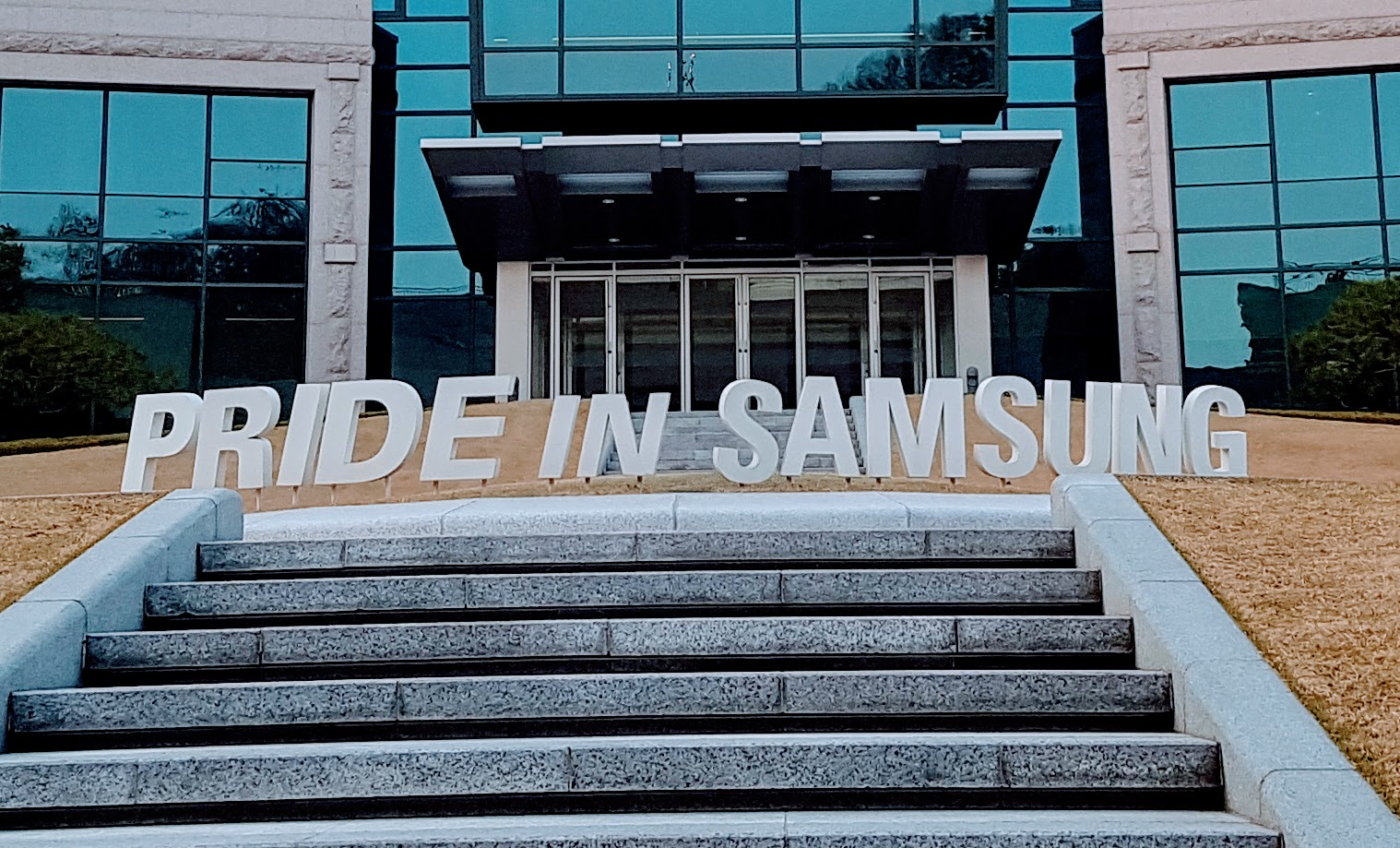
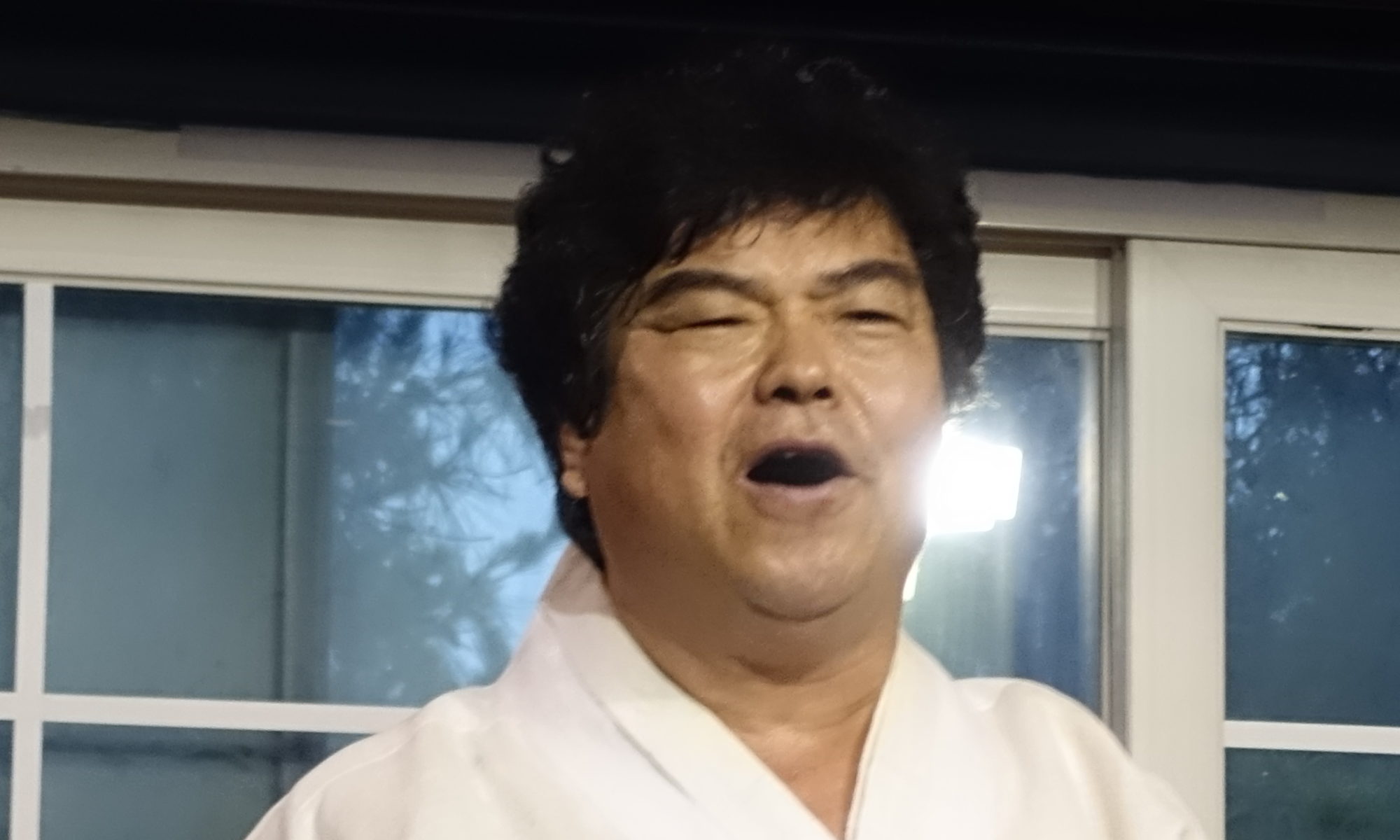
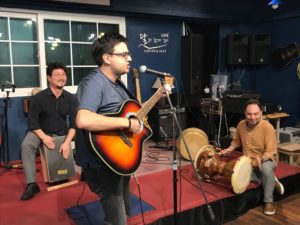
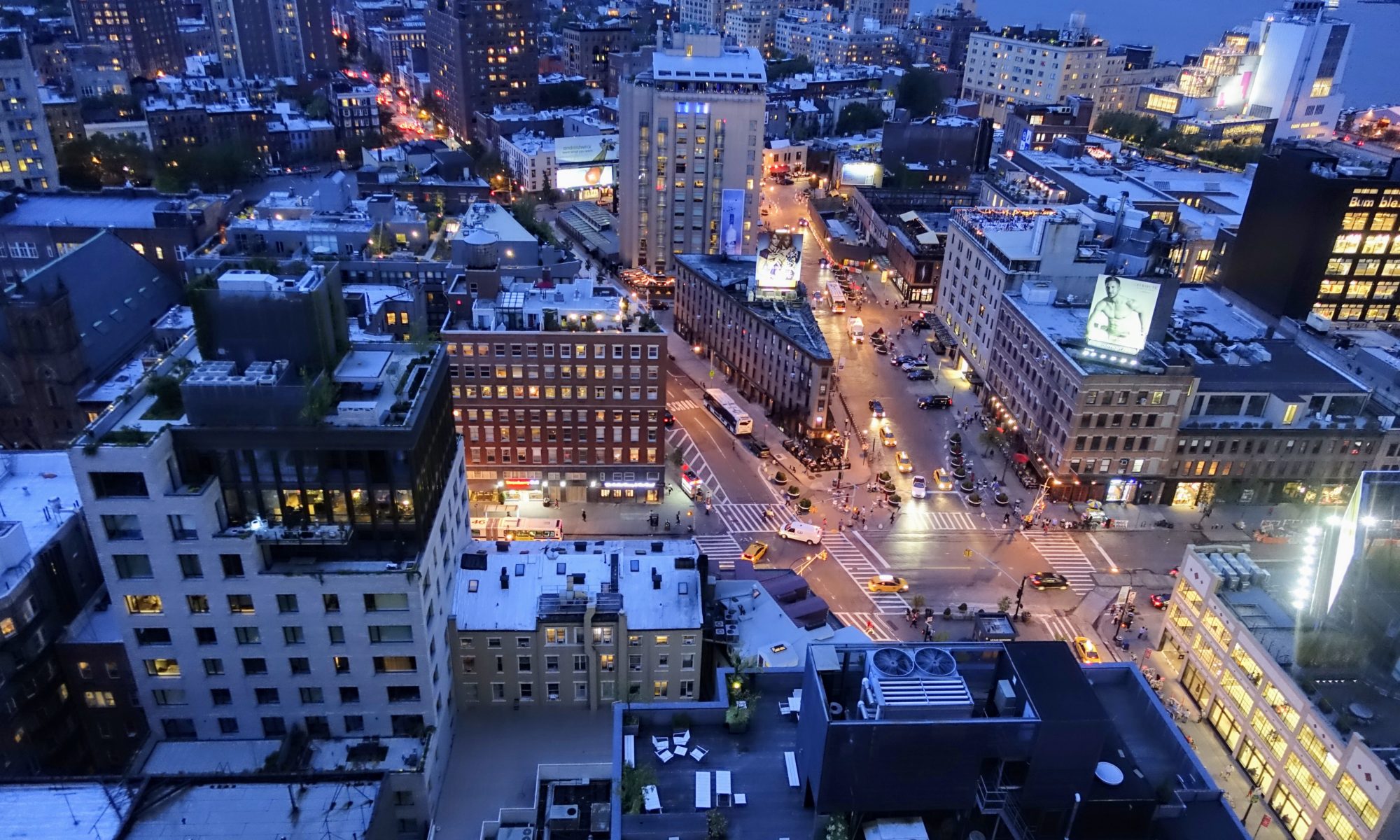
 Seoul is deceptive in more or less the opposite way from New York. Seoul convinces you that everything is normal and there’s nothing to see. The standard tourist circuit includes some so-so palaces that were all rebuilt in the last 50 years anyway, plus a bunch of shopping districts where everyone’s wearing Western clothes and drinking Starbucks coffee. As a friend put it recently, “I was expecting Seoul to be more Asian.” The beige apartment towers, the red-brick residential buildings, the glass-and-stone commercial strips have an almost militant blandness, and the chain stores repeat like a canvas backdrop loop on a crank. Even the city slogan, “I.SEOUL.U,” manages to convey nothing, while its bizarreness distracts you from the actual city.
Seoul is deceptive in more or less the opposite way from New York. Seoul convinces you that everything is normal and there’s nothing to see. The standard tourist circuit includes some so-so palaces that were all rebuilt in the last 50 years anyway, plus a bunch of shopping districts where everyone’s wearing Western clothes and drinking Starbucks coffee. As a friend put it recently, “I was expecting Seoul to be more Asian.” The beige apartment towers, the red-brick residential buildings, the glass-and-stone commercial strips have an almost militant blandness, and the chain stores repeat like a canvas backdrop loop on a crank. Even the city slogan, “I.SEOUL.U,” manages to convey nothing, while its bizarreness distracts you from the actual city.